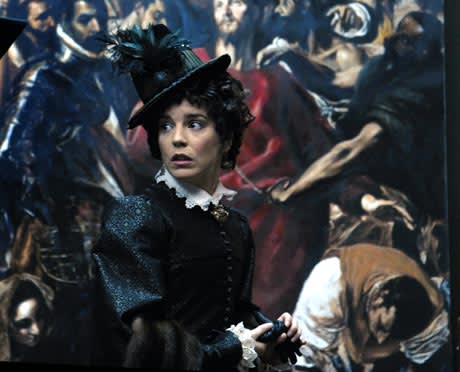"Can the darkness condemn the light? asks the poster for Iannis Smaragdiss newest film El Greco, which tells the story of Cretan-born painter, Domenikos Theotokopoulos, who gained fame in Spain in the sixteenth century under the name "El Greco. In case you were wondering, the answer is no. According to the movie, darkness cant actually condemn the light, but it can come pretty darn close.
El Greco plays on the theme of light versus darkness in the context of the Spanish Inquisition, during which the film is set. This thematic interplay also makes reference to El Grecos art and his ability to stand by his ideals in the face of the Church, which seeks to destroy him. However, the film unfortunately fails to make the profound commentary it would have liked to due to its predictability and cliché-ridden script.
Based on the Greek biography of the artist, El Greco: The Painter of God by Dimitris Siatopoulos, its clear that this is one story that never should have been told in English. While British actor Nick Ashdon in the lead role is convincing enough, the rest of the cast have a hard time making the dialogue sound believable.
The result is an overacted melodrama in which the moments intended to be the most heart wrenching are actually the most ridiculous. The score doesnt help much either, since Vangelis (who composed the music for 1981s Oscar-winning Chariots of Fire) seems to be stuck in the 80s, with his sweeping synth-string aesthetic.
However, this film does have its virtues. When you can ignore the fact that Ashtons fake beard looks like a handful of Velcro strips pasted to his face, your eyes will be pleasantly rewarded with some beautiful on-location shots of Crete, Italy and Spain.
Moreover, the easy-to-follow plot makes for a quick and easy lesson in the history and art of the period. And if youre lucky, you might even learn about light and dark.
(Alexandros)El Greco plays on the theme of light versus darkness in the context of the Spanish Inquisition, during which the film is set. This thematic interplay also makes reference to El Grecos art and his ability to stand by his ideals in the face of the Church, which seeks to destroy him. However, the film unfortunately fails to make the profound commentary it would have liked to due to its predictability and cliché-ridden script.
Based on the Greek biography of the artist, El Greco: The Painter of God by Dimitris Siatopoulos, its clear that this is one story that never should have been told in English. While British actor Nick Ashdon in the lead role is convincing enough, the rest of the cast have a hard time making the dialogue sound believable.
The result is an overacted melodrama in which the moments intended to be the most heart wrenching are actually the most ridiculous. The score doesnt help much either, since Vangelis (who composed the music for 1981s Oscar-winning Chariots of Fire) seems to be stuck in the 80s, with his sweeping synth-string aesthetic.
However, this film does have its virtues. When you can ignore the fact that Ashtons fake beard looks like a handful of Velcro strips pasted to his face, your eyes will be pleasantly rewarded with some beautiful on-location shots of Crete, Italy and Spain.
Moreover, the easy-to-follow plot makes for a quick and easy lesson in the history and art of the period. And if youre lucky, you might even learn about light and dark.




